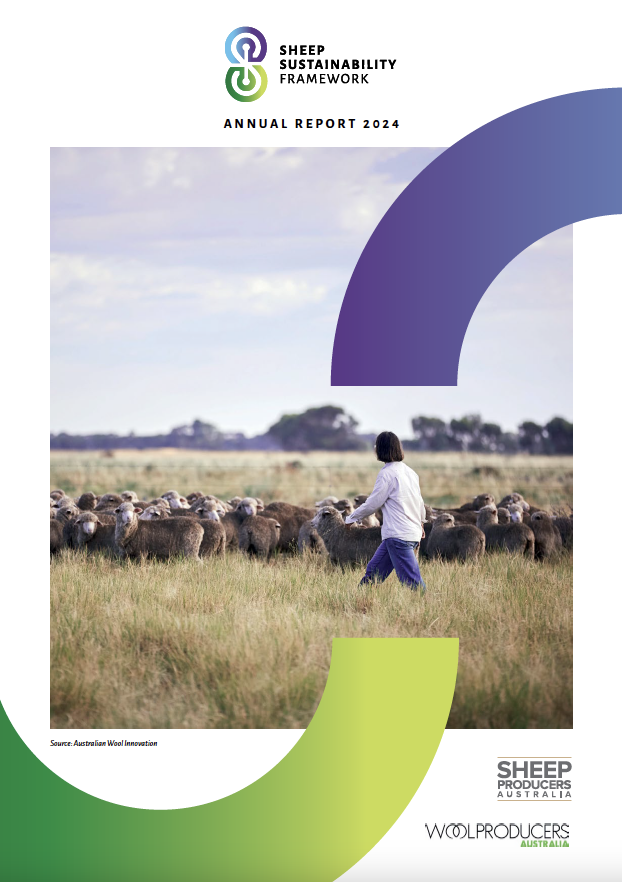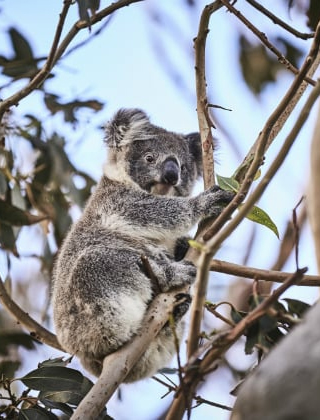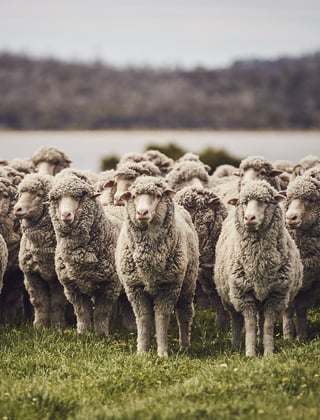Industry sustainability performance report

The Australian sheep industry’s Sheep Sustainability Framework (SSF) last month issued its latest Annual Report which provides data on the industry’s progress against key sustainability priorities. The SSF was initiated in 2021 by Australia’s sheep industry leaders to demonstrate the industry’s sustainable practices, identify areas for improvement, and better communicate with customers and consumers.
What is the Sheep Sustainability Framework?
The Sheep Sustainability Framework (SSF) is an industry owned initiative to monitor, measure and report the Australian sheep industry’s performance against sustainability priorities.
WoolProducers Australia and Sheep Producers Australia led the development of the SSF with AWI and Meat & Livestock Australia providing funding, together with strategic and secretariat support.
The Framework was developed through extensive consultation and launched in April 2021.
The SSF identified 21 priorities relevant to sustainable sheep production in Australia, classed into four themes:
- Caring for our sheep
- Enhancing the environment and climate
- Looking after our people, our customers and the community
- Ensuring a financially resilient industry.
The performance of the sheep industry in these areas, tracked over time, provides evidence of the industry’s commitment to continuous improvement. It demonstrates that Australia has a clear path towards sustainably produced sheep meat and wool.
“The significance of the framework is around galvanising industry and telling a great story. We have a consumer base eager for information about the provenance of products, and this gives us an opportunity to provide customers globally with authoritative data from the source.”
John Roberts, AWI CEO
While the SSF takes an industry-wide perspective and therefore does not require any direct input from producers, individual businesses may use the SSF to understand the industry’s sustainability credentials and material issues, and consider these in their forward planning.
What is the industry’s progress?

The latest 68-page SSF Annual Report, released in August 2024, is available on the SSF website at www.sheepsustainabilityframework.com.au.
The SSF last month launched its latest Annual Report which reports data on industry progress against key sustainability priorities.
The task of building a complete framework where every indicator has both a metric and data is progressing well, with 96% of SSF metrics now having supporting data. The Annual Report provides second or third wave data points for 60% of the metrics, and baseline (starting) values for 36%.
In addition to the new Annual Report, also available on the SSF website is a new digital data dashboard that includes current and historical data, thereby showing the progress that the industry is making across multiple years.
The digital data dashboard is in an interactive format that will be updated with new information as it becomes available.
Reported for the first time in the SSF, sheep producers were asked to rate their satisfaction with their ‘life as a whole’ as part of the Global Life Satisfaction Index, which encapsulates their standard of living, health, what they are achieving in life, personal relationships, safety, feeling part of their community and future security. Their score of 76.1% was higher than the average Australian (69.4%).
Sheep producers have shown a growing interest in measuring their farm greenhouse gas (GHG) emissions. The latest National Producer Survey found the percentage of producers using carbon accounting or another process for their enterprise had more than tripled to 9.9%, up from 3% in the 2022 National Producer Survey.
Other highlights include:
- Baseline data showed 72.6% of producers are undertaking deliberate activities to measure, maintain or enhance biodiversity.
- The percentage of wool declared as non-mulesed/ceased mulesed has increased to 18.6% for Merino and 47.1% for non-Merino.
- The appropriate use of pain management for mulesing, castration and tail docking continues to improve year-on-year.
- The gross value of the Australian sheepmeat and wool industry has jumped 8.9% in a year to $7.7 billion.
Access to labour remains an issue for the industry. In 2023, the National Producer Survey asked producers to rate the extent to which availability of general labour was an issue for their operation. More than four in every 10 producers (42%) reported major issues with finding general labour, representing was a 7% increase since 2022. The story is slightly better for shearing labour, with 35.3% of producers reporting issues with the availability of shearers, down from 38.8% in 2022.
More information: www.sheepsustainabilityframework.com.au
This article appeared in the September 2024 edition of AWI’s Beyond the Bale magazine. Reproduction of the article is encouraged.















